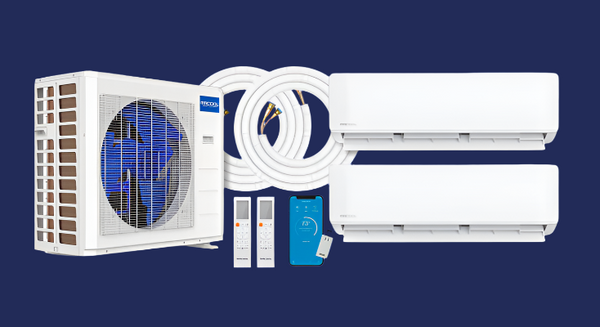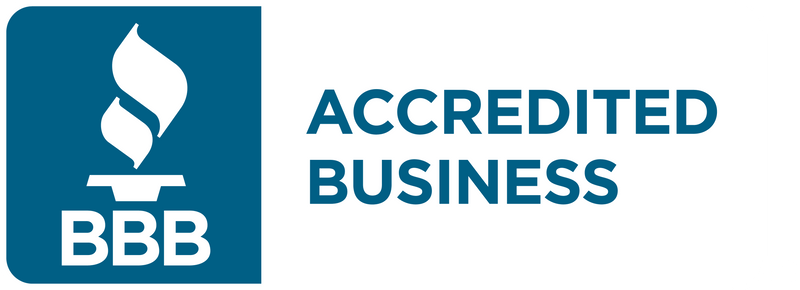The Upcoming Refrigerant Change from R-410A: What It Means for HVAC Systems
As the HVAC industry continues to evolve, one of the biggest shifts on the horizon is the transition away from R-410A refrigerant. With a focus on reducing environmental impact, new refrigerants are being introduced to replace R-410A, changing the landscape for homeowners and businesses alike. This shift is driven by both regulatory changes and a growing demand for more eco-friendly solutions in heating, ventilation, and air conditioning systems.
For those using MRCOOL DIY Direct systems or planning future installations, it's essential to understand what this change means, what you can expect moving forward, and how it could impact your HVAC system in the years to come.
Why Is R-410A Being Phased Out?
R-410A has been a widely used refrigerant for years, replacing R-22 due to its lower ozone depletion potential. However, while R-410A doesn't damage the ozone layer, it has a high global warming potential (GWP). The industry has recognized the need to adopt refrigerants with lower GWP in line with environmental goals set forth by global agreements such as the Kigali Amendment to the Montreal Protocol.
The new refrigerants that will replace R-410A are designed to meet both environmental standards and improve efficiency in HVAC systems. These changes are part of a larger effort to reduce the overall greenhouse gas emissions from refrigerants used in air conditioning and heat pump systems worldwide.
What Will Replace R-410A?
The refrigerant expected to replace R-410A is R-32. R-32 has been used in various systems across the globe and is favored for several reasons:
- Lower GWP: R-32 has a GWP that is significantly lower than R-410A, reducing its environmental impact.
- Improved Efficiency: R-32 is more energy-efficient, meaning systems using this refrigerant may operate with greater performance and consume less energy over time.
- Single-Component Refrigerant: Unlike R-410A, which is a blend of refrigerants, R-32 is a single-component refrigerant, making it easier to recycle and manage.
Another potential refrigerant in the conversation is R-454B, which offers similar advantages to R-32 but with an even lower GWP. However, the primary refrigerant expected to dominate the U.S. market is R-32.
What Does This Mean for Current Systems Using R-410A?
One of the key concerns for homeowners is what will happen to systems that currently use R-410A. The good news is that R-410A systems will still be serviced and maintained for years to come. Just because R-410A is being phased out doesn’t mean your current system will become obsolete.
- Availability of R-410A: Even as new systems switch to R-32 or other alternatives, R-410A will still be available for service and maintenance. However, as production is gradually reduced, the cost of R-410A may increase over time.
- Compatibility: It's important to note that R-32 is not a drop-in replacement for R-410A. This means you cannot simply switch refrigerants in an existing system. Systems designed for R-410A must continue to use it unless they are replaced with newer models built to handle the new refrigerant.
- Future-proofing: If you're planning to replace or upgrade your HVAC system in the near future, choosing a system designed for R-32 could be a smart move. This will ensure you have a system that is compliant with the latest environmental regulations and refrigerant standards.
What Should MRCOOL DIY Direct Customers Expect?
For customers of MRCOOL DIY Direct, it’s important to stay informed as the industry transitions to new refrigerants. MRCOOL is committed to offering products that align with regulatory changes and environmental standards while maintaining the ease of installation and high performance that DIY customers expect.
Here’s what you can expect in the coming years:
- Gradual Transition: MRCOOL and other manufacturers will begin rolling out systems that use R-32 or other low-GWP refrigerants. While this will take time, the transition is already in motion, with manufacturers ensuring the new systems offer superior energy efficiency and reliability.
- No Immediate Action Required: If you currently own a MRCOOL system using R-410A, there is no immediate need to replace or upgrade it. These systems will continue to be serviced with available R-410A refrigerant, and there are no plans for a rapid phase-out.
- New Product Lines: As the industry adopts new refrigerants, expect to see new MRCOOL product lines incorporating R-32 or other low-GWP refrigerants. These products will be designed to meet the latest efficiency standards while maintaining the DIY-friendly features that MRCOOL is known for.
- Maintenance and Support: MRCOOL DIY Direct remains dedicated to supporting all customers, whether you’re using R-410A systems or preparing for a future upgrade to R-32. Our expert team is here to help guide you through any maintenance or replacement decisions that may arise due to this refrigerant shift.
How Does the Refrigerant Transition Affect Installation and Maintenance?
One of the key features of MRCOOL DIY systems is their ease of installation, thanks to pre-charged line sets that don’t require special handling of refrigerant. As the transition to new refrigerants takes place, MRCOOL will continue to offer these user-friendly systems, ensuring that the DIY installation process remains simple and efficient.
- R-32 Systems: While R-32 systems will introduce new refrigerant handling considerations, MRCOOL is working to ensure that future products using this refrigerant maintain the same installation ease and accessibility that customers love.
- Maintenance: As always, routine maintenance, such as checking filters and ensuring the outdoor condenser unit is free from debris, remains essential for keeping your system running smoothly—regardless of the refrigerant it uses.
The Benefits of Switching to Low-GWP Refrigerants
While the transition away from R-410A may seem daunting, it brings several benefits to both homeowners and the environment:
- Lower Carbon Footprint: With R-32’s lower GWP, switching to this refrigerant can help reduce your HVAC system’s environmental impact. This is an important step in contributing to global efforts to combat climate change.
- Enhanced Energy Efficiency: Systems that use R-32 are generally more energy-efficient than those using R-410A, which can translate into lower utility bills and improved system performance.
- Compliance with Regulations: By upgrading to a system using R-32, you’ll ensure that your HVAC system complies with future regulations and standards, avoiding potential issues down the road as R-410A is gradually phased out.
Final Thoughts: Preparing for the Future of Refrigerants
The transition from R-410A to R-32 and other low-GWP refrigerants marks a significant shift in the HVAC industry. While it may take time for the full effects to be felt, this change will bring both environmental benefits and long-term savings for homeowners. MRCOOL DIY Direct customers can rest assured that we’re prepared for these changes and committed to providing cutting-edge, eco-friendly HVAC solutions that make your home more efficient and sustainable.
If you have questions about how the refrigerant transition might affect your system or if you’re considering upgrading to a new model, don’t hesitate to contact our expert team at MRCOOL DIY Direct. We're here to help guide you through every step of the process, ensuring you make informed decisions that benefit both your home and the environment.





